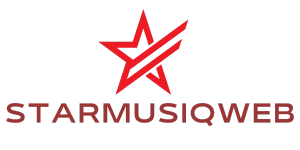How a Private Duty Home Health Software Can Help with Caregiver Management and Scheduling

You know the drill. Tuesday morning. Three caregivers have already called out. One client refuses anyone but “Miss Linda.” Another wants to add an extra visit this afternoon. And your scheduling board looks like a crime scene from a true-crime docuseries.
This is private duty home care. And if you’re still managing your caregivers with spreadsheets, phone trees, and pure adrenaline—you’re not running an agency. You’re surviving one.
It doesn’t have to be this way.
Modern private duty home health software was made for moments like these. Not just to organize the madness, but to bring order, speed, and a little peace of mind to your day-to-day.
Let’s unpack what that looks like.
Scheduling: From Spreadsheet Headaches to Real-Time Harmony
Let’s get something straight:
Scheduling is everything.
It’s the engine of the whole operation. And when it’s running on sticky notes, whiteboards, and “didn’t you get my text?”—things fall apart.
With smart scheduling tools, you’re not guessing. You’re doing this:
- Auto-matching caregivers to clients based on skills, availability, and location
- Seeing who’s working where—in real time
- Setting recurring shifts with a single click
- Managing call-outs with less drama and more delegation
Bonus: You’re no longer playing phone tag with six people just to fill one Tuesday lunch visit.
Caregivers Deserve Better Tools (So Do You)
Let’s talk about your field team—the caregivers who keep your agency afloat.
They are loyal, skilled, and stretched thin. And if your system is making them log hours on paper or memorize three different passwords to see their schedule? That’s a problem.
The right software changes that. It gives caregivers:
- A clear, mobile-friendly view of their schedules
- Real-time updates when shifts change
- Access to client care plans, notes, and alerts—all from their phone
- Direct messaging with supervisors (without needing five apps)
No more “I didn’t know.” No more frustration. Just confident caregivers who know what’s happening before they walk in the door.
Credential Compliance? Covered Before You Even Think About It
Licenses expire. CPR cards lapse. Background checks need updating.
And you’re expected to remember all of it?
Nope. That’s your software’s job now.
- It tracks every document and expiration
- Sends automated alerts to staff when something’s due
- Blocks unqualified caregivers from being scheduled accidentally
It’s the kind of protection that doesn’t just keep you compliant—it keeps your clients safe and your agency audit-ready.
Call-Outs Happen. Chaos Doesn’t Have To.
Private duty care is unpredictable. People get sick. Cars break down. Life happens.
But when someone calls out, your platform should spring into action, not leave you scrambling.
- Alert goes out
- Available caregivers are identified—by skill, location, availability
- Backups are messaged instantly
- Shift gets filled, and the day moves on
The best part? The client never knows there was almost a crisis.
Payroll Without the Guesswork
Paper timesheets are the stuff of nightmares.
They’re messy. They’re late. They’re often wrong. And they turn payroll into a weekly scavenger hunt.
Modern private duty home health software? It syncs shift data directly with payroll systems. With GPS-verified clock-ins and digital timesheets, what’s worked = what’s paid.
No more manual entry. No more disputes. Just accuracy.
And maybe, just maybe, a Friday that doesn’t end in a meltdown.
Data You Can Actually Use (Imagine That)
Want to know which caregivers are overworked?
Which clients are getting frequent cancellations?
Which time blocks always go unfilled?
Your gut might have guesses. But your software has receipts.
Pull reports. Spot trends. Make better staffing decisions based on real, actionable data—not vibes and guesswork.
Because growth isn’t about grinding harder. It’s about managing smarter.
Final Thought: The Software Isn’t Just for the Office—It’s for the Mission
Private duty care is personal. It’s not about punching a clock. It’s about showing up—consistently, compassionately, reliably.
That doesn’t happen by magic. It happens with systems that support your people.
So, if you’re still piecing together schedules like a jigsaw puzzle and hoping for the best?
It might be time to give your team what they actually need: software that works as hard as they do.




